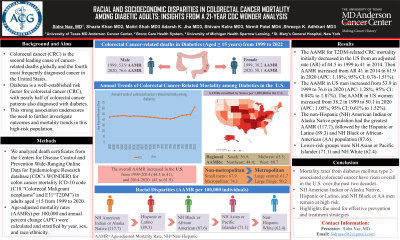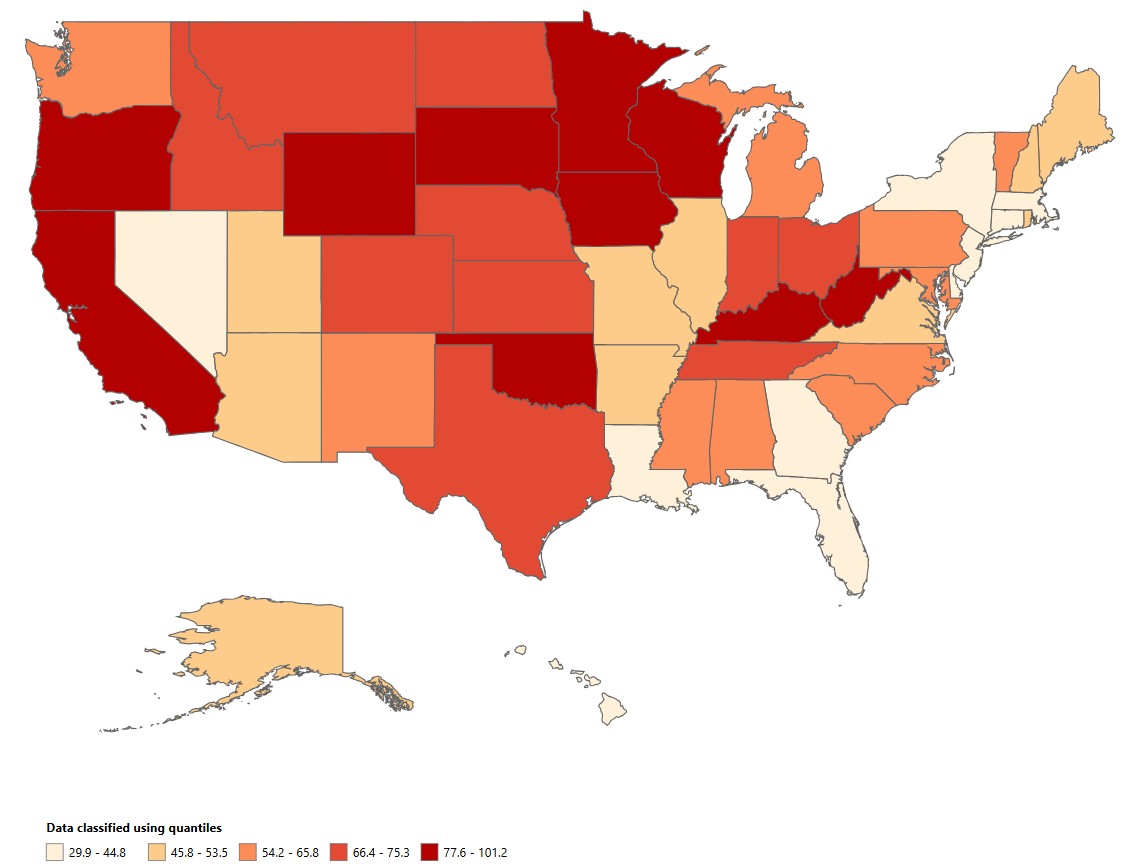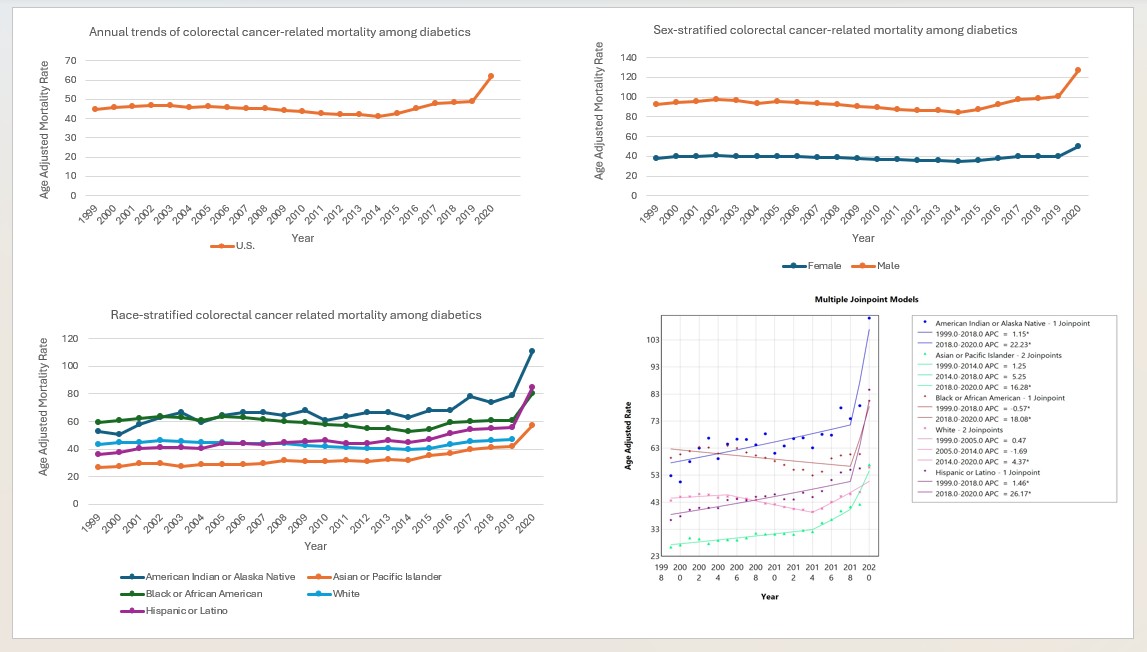Monday Poster Session
Category: Colon
P2455 - Racial and Socioeconomic Disparities in Colorectal Cancer Mortality Among Diabetic Adults: Insights From a 21-Year CDC WONDER Analysis (1999-2020)


Sidra Naz, MD, MPH
University of Texas MD Anderson Cancer Center
Houston, TX
Presenting Author(s)
1University of Texas MD Anderson Cancer Center, Houston, TX; 2University of Michigan Health - Sparrow, Lansing, MI; 3University of Michigan Health Sparrow Lansing, Lansing, MI; 4BronxCare Health System, New York, NY; 5St. Mary's General Hospital, New York Medical College, Denville, NJ
Introduction:
Diabetes is a well-established risk factor for colorectal cancer (CRC), with nearly half of colorectal cancer patients also diagnosed with diabetes. This strong association underscores the need to further investigate outcomes and mortality trends in this high-risk population.
Methods: Mortality trends for adults aged ≥ 15 years with T2DM-associated CRC were analyzed using CDC WONDER database, identifying deaths through ICD-10 codes C18 “Colon Malignant neoplasms” and E11 “T2DM”. Age-adjusted mortality rates per 100,000 were extracted, and annual percent changes with 95% CIs were calculated across demographic (sex, race/ethnicity, age) and geographic (state, urban-rural, regional) subgroups.
Results:
Between 1999 and 2020, 2,667,369 documented deaths were attributed to CRC among diabetics in the United States. The overall AAMR for T2DM-related CRC mortality initially decreased in the US from an adjusted rate (AR) 44.5 in 1999 to 41 in 2014 (APC: -0.72%; 95% CI: -2.99% to 3.24%). Then AAMR increased from AR 41 in 2014 to 61.9 in 2020 (APC: 1.18%; 95% CI: 0.76% to 1.51%). Males had consistently higher AAMRs than females (76.6 vs. 50.1). The AAMR in US men increased from 53.9 in 1999 to 76.6 in 2020 (APC: 1.28%; 95% CI: 0.84% to 1.87%). The AAMR in US women increased from 38.2 in 1999 to 50.1 in 2020 (APC: 1.05%; 95% CI: 0.61% to 1.52%). The non-Hispanic (NH) American Indian or Alaska Native population had the greatest AAMR (117.7), followed by the Hispanic or Latino (89.3) and NH Black or African American (AA) population (87.6). Lower-risk groups were NH Asian or Pacific Islander (71.1) and NH White (62.4). AAMR also varied by region (West: 80.7; Midwest: 65.5; South: 56.9; Northeast: 44.4). Non-metropolitan areas had higher AAMR (small metro: 67.9; non-core areas: 76; micropolitan areas: 74) than metropolitan areas (large central metropolitan areas: 61.7; large fringe: 50.2). The states in the upper 90th percentile were Oregon, California, Kentucky, Wyoming, Oklahoma exhibited an approx. two-fold increase in AAMRs, compared to states falling in the lower 10th percentile Nevada, Louisiana, Georgia, Florida, New York.
Discussion:
Mortality rates from diabetes mellitus type 2-associated colorectal cancer have risen overall in the U.S. over the past two decades. NH American Indian or Alaska Native, Hispanic or Latino, and NH Black or AA men remain at high risk, highlighting the need for effective prevention and treatment strategies.


Disclosures:
Sidra Naz, MD, MPH1, Maitri Shah, MD2, Adarsh Kumar. Jha, MD2, Shivam Kalra, MD3, Shazia Khan, MD4, Nirmit Patel, MBBS5, Shreeya kumar. Adhikari, MD2. P2455 - Racial and Socioeconomic Disparities in Colorectal Cancer Mortality Among Diabetic Adults: Insights From a 21-Year CDC WONDER Analysis (1999-2020), ACG 2025 Annual Scientific Meeting Abstracts. Phoenix, AZ: American College of Gastroenterology.
